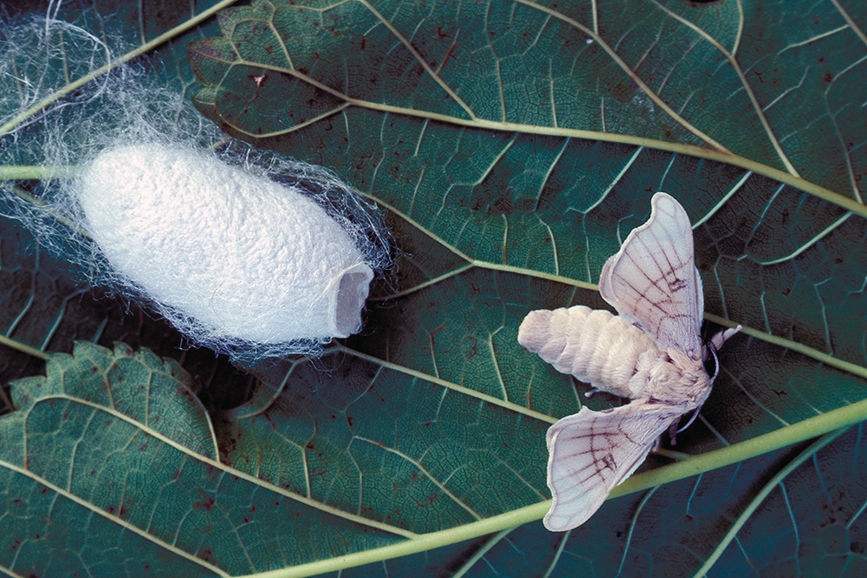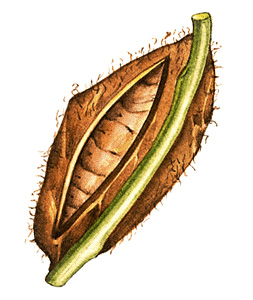Cocoon is a protective covering that encloses the pupa and sometimes the larva of many insects . The mature larva prepares the cocoon as a shelter around itself. Inside the cocoon, the larva changes to a pupa and eventually transforms into an adult insect. Among the insects that spend part of their lives in cocoons are wasps, bees, caddisflies, moths, and some ants. Many spiders spin silk cocoons around masses of their eggs and sometimes around their prey.
The chief substance of most cocoons is silk. But the larva often incorporates other substances, including soil, sand grains, plant materials, and hair or waste from its own body. Some cocoons contain very little silk at all.
Most moth larvae (caterpillars) form cocoons. But some species pass the pupal stage in soil or in parts of plants without forming a cocoon. A few butterfly caterpillars make flimsy cocoons, but most pupate as a hard-shelled chrysalis. Perhaps the best-known cocoon is that of the caterpillar of the silkmoth , which supplies most of the world’s commercial silk.

Most moth caterpillars build their cocoons in protected places in fallen logs, openings in tree bark, or among debris and fallen leaves. Cocoons of some large species, such as Cecropia, Promethea, and Polyphemus moths, are fastened to twigs of trees and can easily be found during winter. The pupae spend the winter inside the cocoon and secrete a dissolving fluid to emerge from the cocoon in spring or summer.
Other moths, including certain species of tiger moths, spend the winter as larvae and form cocoons in spring or summer before pupating. Some species of clothes moths form an incomplete cocoon or pupal case early in larval life and carry it on their backs as they feed. Later, they complete the cocoon and use it for their pupal stage.

